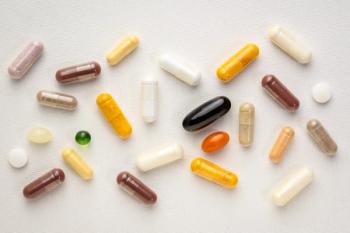
Administration Drives Infliximab Costs Higher than Costs for Adalimumab
Despite lower costs for inpatient and outpatient appointments and surgery for patients receiving infliximab therapy, the costs to administer the therapy make it more expensive than adalimumab therapy.
Despite lower costs for inpatient and outpatient appointments and surgery for patients receiving infliximab therapy, the costs to administer the therapy make it more expensive than adalimumab therapy.
In the United Kingdom (UK), costs of infliximab and infliximab administration in patients with Crohn’s disease are significantly higher than the costs of adalimumab, the results of a study published in the September 2013 issue of Journal of Crohn’s and Colitis suggest.
Despite the higher administration costs, patients receiving infliximab had lower costs of outpatient appointments, inpatient days, surgery, and radiological and endoscopic investigations, the authors noted.
The retrospective cohort study used patient data from The Leeds Teaching Hospitals Inflammatory Bowel Diseases clinic to find luminal Crohn’s disease participants receiving either infliximab or adalimumab therapy. The researchers selected 36 participants receiving each therapy who were matched by age, gender, height, weight, and date of therapy initiation, and analyzed the costs associated with each type of therapy.
The mean difference in cost for outpatient care was approximately £175 less for participants receiving infliximab, and the mean difference in inpatient costs was about £406 less for participants receiving infliximab. Additionally, surgery costs were approximately £293 less for participants receiving infliximab, whereas radiology costs were £14.79 less and endoscopy costs were £43.22 less than those of adalimumab.
Despite the savings in other areas, infliximab’s cost and the costs associated with intravenous administration of the drug were approximately £8000 more than those of adalimumab. The difference in drug and drug administration costs caused the total costs of adalimumab to be £7000 less per patient than the total costs of infliximab.
The authors noted that the hospital from which they drew the study data permits an infliximab sharing program. The costs in the study reflect the cost of infliximab per milligram used rather than per vial used; therefore, the costs of therapy used may have been underestimated.
The therapies had similar clinical outcomes, with 80.6% of participants in each group responding to therapy. The authors noted that the study’s sample size was too small to draw conclusions on each drug’s efficacy as a first-line therapy.
During a July 2013 follow-up, researchers noted that 61.1% of participants in either therapy group achieved glucocorticosteroid-free sustained benefit. Despite this, only 63.9% of participants receiving adalimumab experienced an absence of disease activity flares that required treatment with prednisolone. Meanwhile, 88.9% of participants receiving infliximab experienced no disease flares that required treatment with prednisolone.
“Despite recommendations in the UK that selection of first-line anti-TNF-α therapy should be dictated by cost, we suspect that in many centres, including our own, ultimately the choice is based on patient preference and likelihood of adherence,” the authors wrote. “Our data suggest that, at the present time, this could have significant cost implications for the health service.”
Newsletter
Stay informed on drug updates, treatment guidelines, and pharmacy practice trends—subscribe to Pharmacy Times for weekly clinical insights.










































































































































































































